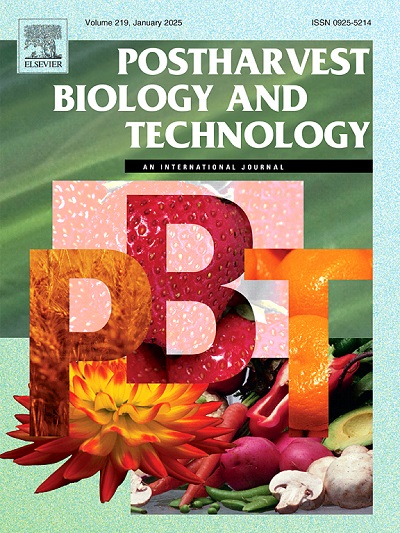Detection of bruising in pear with varying bruising degrees and formation times by using SIRI technique combining with texture feature-based LS-SVM and ResNet-18-based CNN model
IF 6.4
1区 农林科学
Q1 AGRONOMY
引用次数: 0
Abstract
Bruising negatively affects the appearance and sensory quality of fruit, weakening their commercial value. Optical non-destructive testing of bruised fruit is an important research topic. However, the degree and formation time of bruising have a significant impact on detection accuracy, which poses a challenge for accurately detecting bruised fruit. This study attempted to use structured-illumination reflectance imaging (SIRI) to detect bruised pears with different degrees and formation times. Structured-illumination images of pears with three bruising levels (S1, S2 and S3) and five bruising formation times (0, 6, 24, 48 and 72 hours) were collected. Two machine learning models including texture feature-based least squares support vector machine (LS-SVM) and ResNet-18-based convolutional neural network (CNN) were established using different input images (DC, AC, RT, DC-AC and DC-AC-RT). Study indicated that AC and RT images have depth resolution capability, achieving good results for detecting pear bruises within 24 hours combining with two types of models, showing that the powerful detection capability of SIRI technology for early bruising. Compared to LS-SVM model, the ResNet-18-based CNN model obtained better detection performance, and its detection accuracy was not significantly affected by the bruising degree and formation time. For all samples, ResNet-18-based CNN model, combined with AC and RT images, achieved an overall detection accuracy of 92.5 % and 94.3 %, respectively. This study provided a valuable solution for accurate identification of bruised pears with varying bruising degrees and times.
求助全文
约1分钟内获得全文
求助全文
来源期刊

Postharvest Biology and Technology
农林科学-农艺学
CiteScore
12.00
自引率
11.40%
发文量
309
审稿时长
38 days
期刊介绍:
The journal is devoted exclusively to the publication of original papers, review articles and frontiers articles on biological and technological postharvest research. This includes the areas of postharvest storage, treatments and underpinning mechanisms, quality evaluation, packaging, handling and distribution of fresh horticultural crops including fruit, vegetables, flowers and nuts, but excluding grains, seeds and forages.
Papers reporting novel insights from fundamental and interdisciplinary research will be particularly encouraged. These disciplines include systems biology, bioinformatics, entomology, plant physiology, plant pathology, (bio)chemistry, engineering, modelling, and technologies for nondestructive testing.
Manuscripts on fresh food crops that will be further processed after postharvest storage, or on food processes beyond refrigeration, packaging and minimal processing will not be considered.
 求助内容:
求助内容: 应助结果提醒方式:
应助结果提醒方式:


